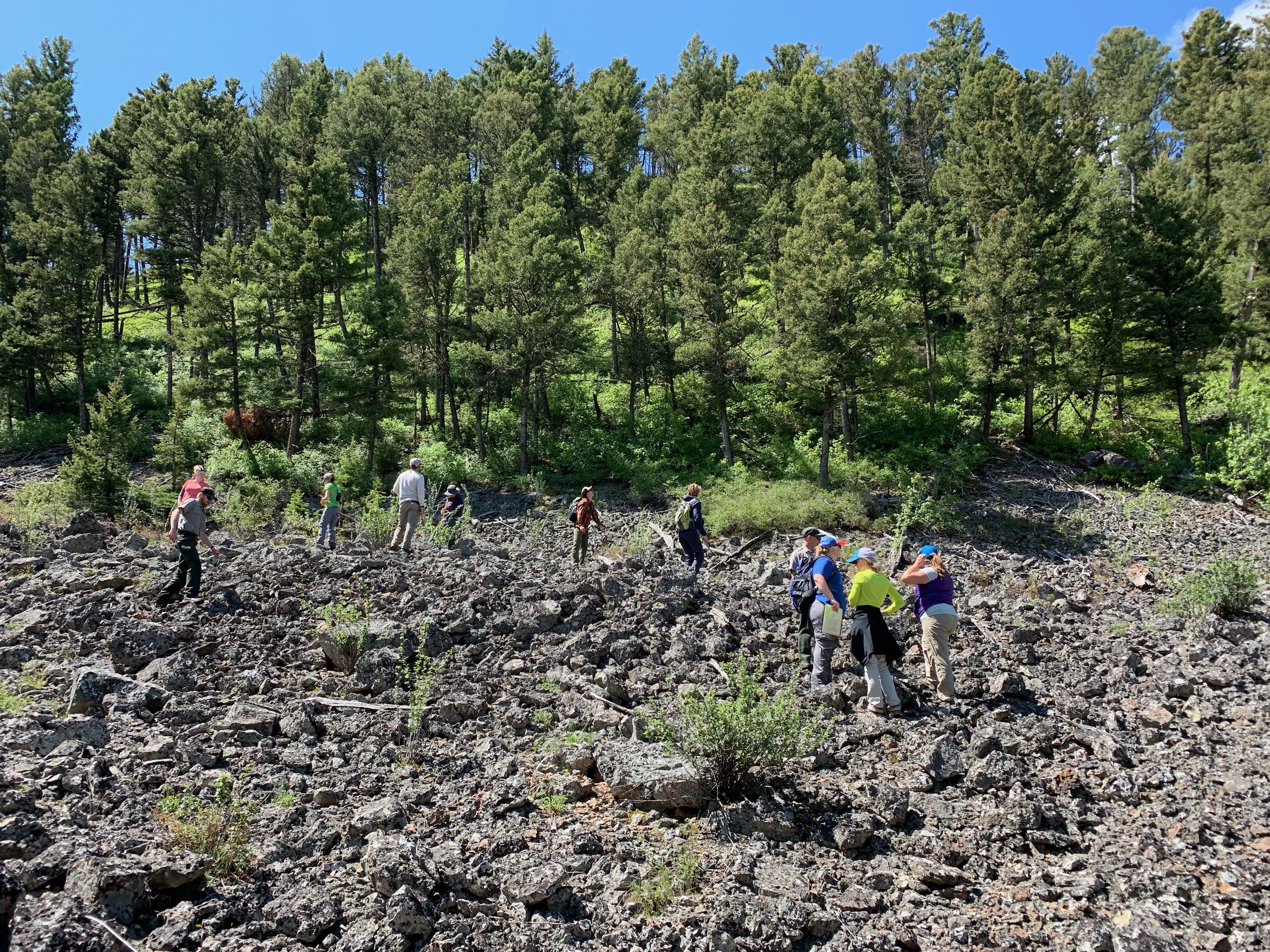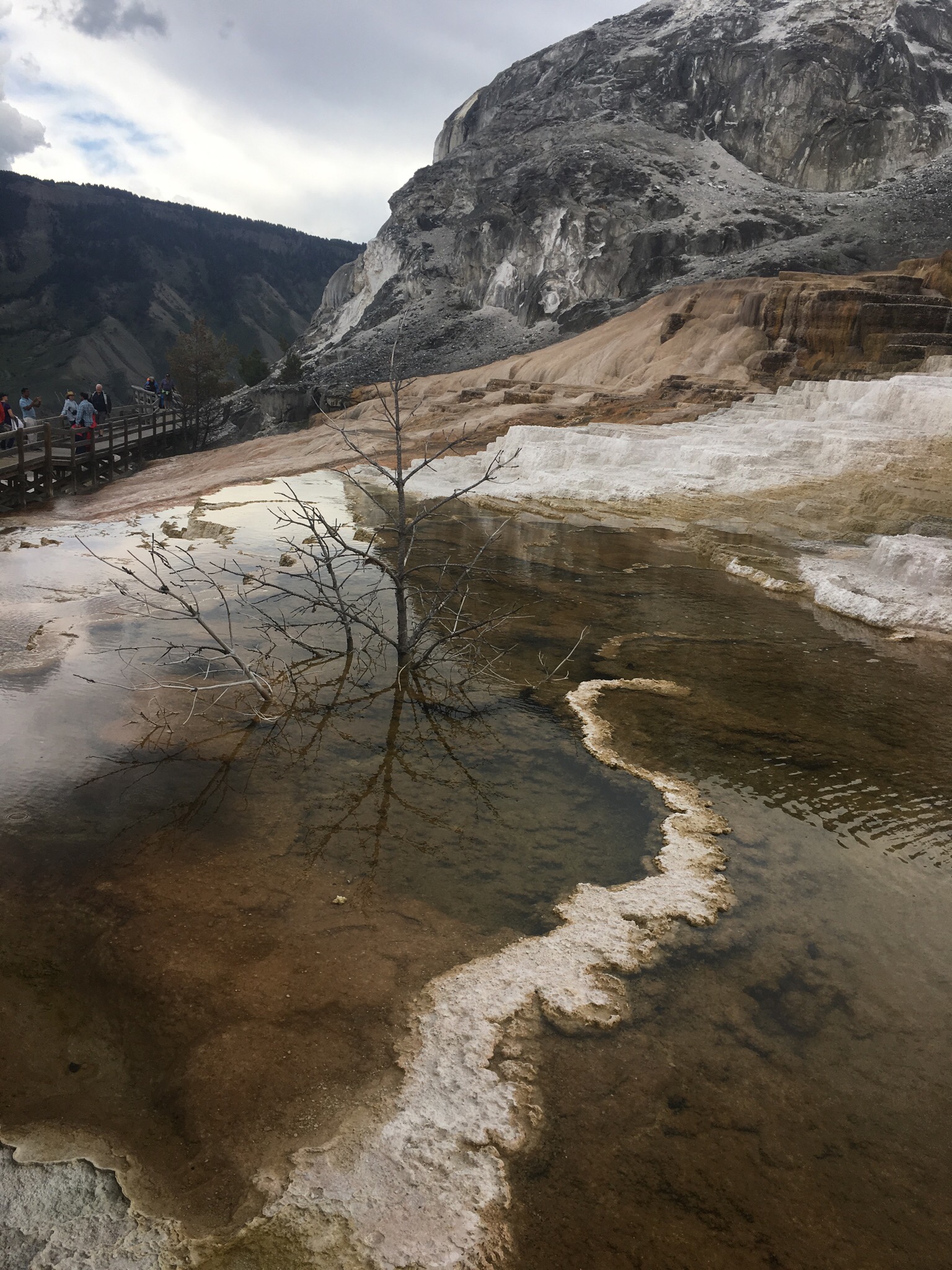June 17, 2019
“Between every 2 pines there is a doorway to a new world” ~John Muir
Our ”new world” started with a hearty breakfast at the Log Cabin Cafe. The coffee was flowing and the eggs were frying to finish our stay at the Grizzly Lodge. We left for Lamar Valley to try our luck at sighting more wolves, but to no avail.
Today’s creature of the day is the Pika (not a Pikachu)- a small animal kin to rabbits. Ranger Matt and Ranger Michael talked to us about a citizen science project that helps collect data to study the impact of climate change on pika presence and absence in various parts of the park. Pika are a great indicator species for monitoring climate change— the pika’s normal body temperature is about 104° F but if they are exposed to temps above 80° for more than 2 hours it will raise their body temperature into a deadly range. Pika live on talus slopes, which are rocky slopes often formed by eroding old lava flows. When it gets too hot, they hide under the rocks to find cooler temperatures. Our job involved helping the rangers collect data by searching for pika sightings, looking for scat (poop) and “haystacks” (their caches of food) under the rocks, and taking temperature readings around the rocks to monitor the environmental conditions under which they can be found. During our survey we successfully saw pika, scat, and haystacks! Our hike to the pika survey site ended with two unique firsts: the Y-e-l-l-o-w-s-t-o-n-e picture and Kali’s discovery of a set of elk antler sheds.

The group surveying for pika
 Our group, spelling out Yellowstone
Our group, spelling out Yellowstone
Early in the afternoon we took the Howard Eaton Trail to view the upper Mammoth Terrace Hot Springs. Although it was mostly uphill (and we were breathing heavily) it was well worth the journey to view the Upper Terrace. The rain held off long enough for us to make it through the boardwalk and view the different colors of the hot springs. Emily gave a great presentation of her expert topic on bioprospecting. We learned that the presence of archaea – “thermophiles”- is what causes the different colors in thermal areas. After the Terrace hike, we had some down time to eat and walk around the Mammoth Hot Springs area.

Mammoth Terraces
On our drive to the “Hitching Post” (hoping for more wolf sightings), we stopped at a pond to observe ducks enjoying the sunshine. There were ringnecks, ruddy ducks and the good ole American coot enjoying an afternoon swim. We were thrilled when Casey spotted a badger scurrying along the pond. Badgers are known for being quite vicious and will fight predators such as bears and wolves. While we did not observe an encounter with a predator, we did see the badger enjoying his supper, a tasty Uinta ground squirrel. Luckily, everyone was able to see it!

Badger with the Uinta ground squirrel it ate.
A double bear sighting was a good way to finish up our day of wildlife observations. We saw what folks out here call a “cinnamon bear” (a brown colored black bear) VERY close to the road and a black bear hiking up the side of the Yellowstone River were seen within 5 minutes of each other!
With luck on our side, we get to finish up the night early at the Roosevelt Rough Rider cabins. This day has been nothing short of badgers, bears, and beers.
Till next time,
Kali, Casey, Michele
P.S
Poo-pourri makes a great air freshener for the car!

what do you think?